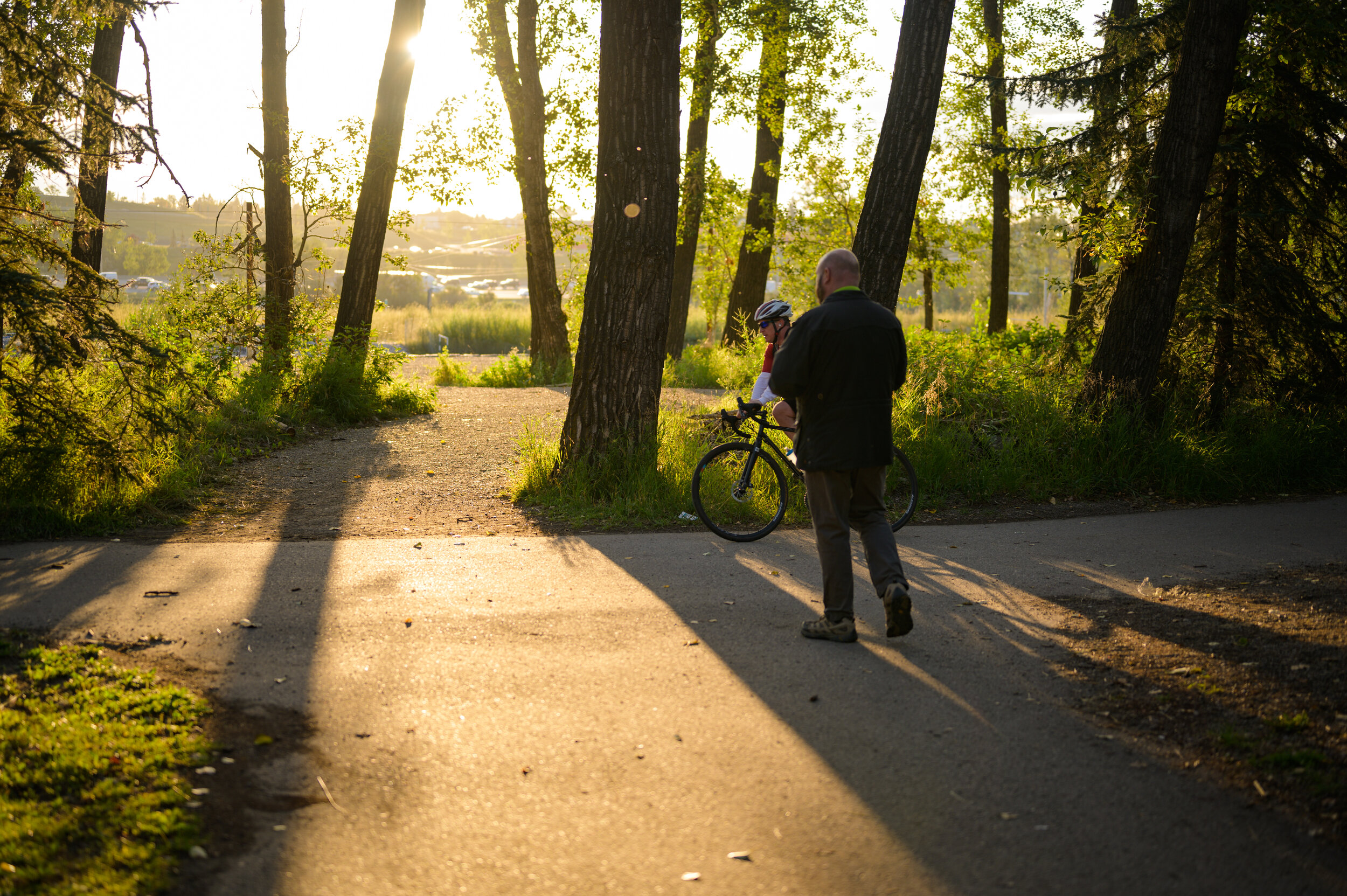Harvie Passage
Client Government of Alberta
Location Calgary | Alberta | Canada
The main impact caused by the 2013 flood was the filling in of the low water channel (LWC) and erosion of a historical side channel of the Bow River. Historically, the side channel was located in its current alignment prior to the 1970’s, but due to construction activities and a beaver dam, the channel infilled and separated from the river. The 2013 flood destroyed the beaver dam, reactivated the side channel, filled in the newly constructed LWC with river sediments and moved the LWC to the historical alignment. The design of the new LWC along the eroded historical alignment, allowed for a larger recreational facility that incorporates drops for various white-water skill levels and user experiences.
Under the auspices of the Disaster Recovery Program, Alberta Transportation took charge of the revitalization efforts, partnering with Klohn Crippen Berger (KCB), O2, and other specialized experts. The redesigned passage shifts from a single drop weir to a white-water playground with a series of pools and rapids, inviting recreational activities such as white-water kayaking, canoeing, wave surfing and rafting down the river. Designing connections for people get to the water and supporting a rich cultural atmosphere around the enjoyment of the water elevated the plan.
A thoughtful circulation network, conceived by O2, leveraged the emergency service routes into a beautiful promenade with nodes for resting and socializing. The promenade also connects seamlessly with the city’s regional pathway network and adjacent park trails. This circulation network integrates Harvie Passage into The City’s Bend in the Bow Masterplan, creating a corridor of ecologically sensitive parks, rich in recreational opportunities, in Calgary’s urban center.
To restore the local ecosystem and add biodiversity to the area, the project design applied an entirely native plant pallet. To restore the riparian buffer of the river, provide shade for visitors and create habitat, O2 weaved pockets of vegetation into the terracing through various planting techniques. Bioengineering approaches were applied where boulders were not needed, such as planting pockets for shrubs and trees, soil wrapped brush layers, and vegetated riprap banks with live stakes bundled in perforated tubes and layered between plywood to provide rooting behind the revetment.
Another feature of the project was the restoration of the riparian forest on the island. Bioengineering techniques were used on the upstream side of the island to increase flood resiliency to establish vegetation typical of islands along the Bow River. The downstream side focused on riparian planting and seeding to create ecosystem structure and resiliency. Habitat features such as snags, cobble piles and woody debris were created as well.
The redesign facilitates upstream and downstream fish passage. Boulders were placed within the channels to create fish habitat, as well as boat and fish refuge from the current. The riparian planting pockets considered instream habitat creation and refuge through plant shading and overhangs without entrapping river users.
Calgarians have so thoroughly adopted this park, that the number of users has increased substantially beyond what was anticipated, resulting in a wayfinding and educational signage project that O2 initiated. It is a popular destination and attracts a variety of park users outside the passage itself. This has quickly instigated an exploration into improvements within the adjacent parks to accommodate the interest, as well as new project along other reaches of the Bow River to mimic the success this space holds.
Harvie Passage signifies more than a destination for outdoor enthusiasts. The project adeptly addresses multifaceted challenges, including public safety, security of irrigation supply, fish passage, flood resiliency and recreational amenities. The highly collaborative approach has resulted in a harmonious blend of functionality, unique details, and aesthetic appeal. Harvie Passage has transformed a disaster recovery project into a successful harmony of ecology and recreation.













